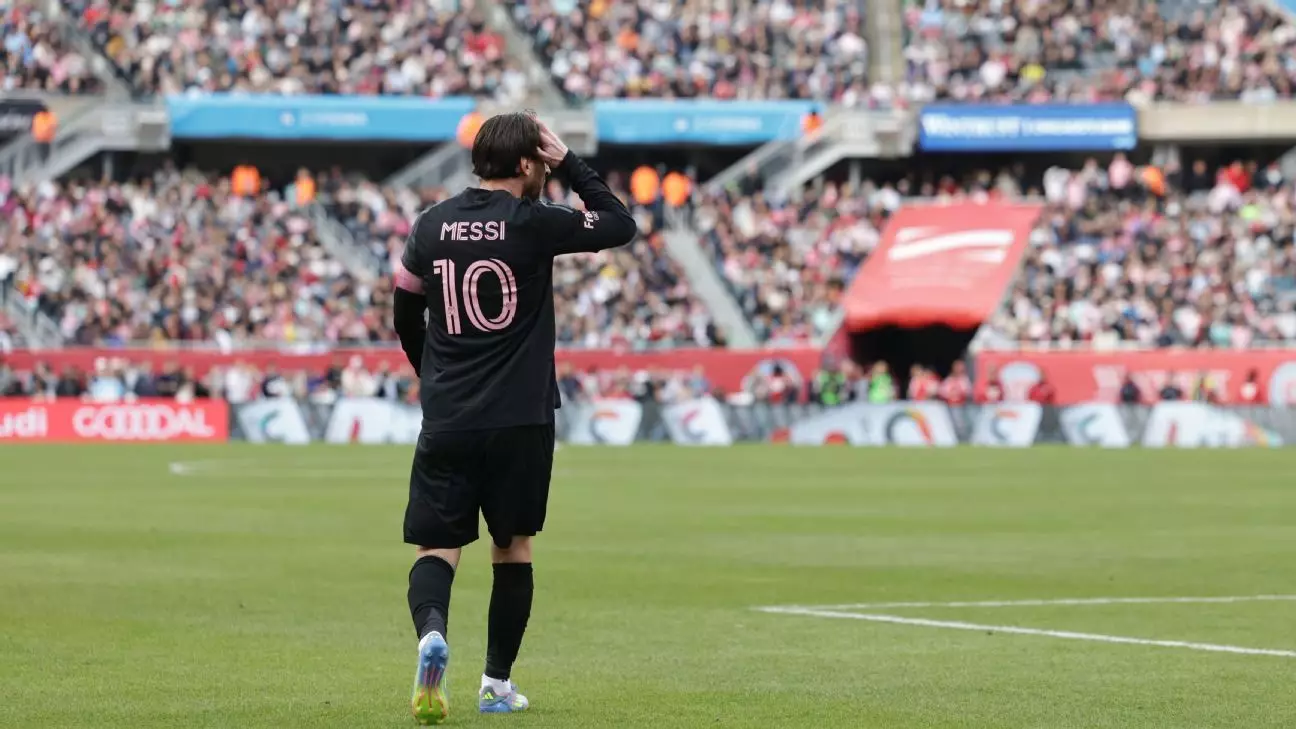Since Lionel Messi’s arrival at Inter Miami in 2023, the football landscape in North America has witnessed a marked transformation. His presence transcends mere statistics; it reshapes perceptions, engenders excitement, and draws fans to matches in unprecedented numbers. Coach Javier Mascherano insightfully pointed out that Messi is not only a player but a phenomenon, capable of altering how the world perceives Major League Soccer (MLS). With every match Messi plays, and every record broken—like this past weekend’s attendance at Soldier Field—he amplifies the league’s importance on a global scale.
Mascherano emphasized that the influence of Messi should not lead to complacency within the league. Despite the evident growth, he advocates for a strategic commitment by MLS to nurture that momentum. He is right; Messi is not merely a catalyst for short-term gains but a means for long-term development of soccer in the United States. The increased visibility of MLS, as highlighted by the over 62,000 fans drawn to Soldier Field, indirectly challenges the notion that soccer lacks a passionate following in America.
Breaking Attendance Records and Expectations
The record-breaking attendance numbers at games featuring Messi are astonishing. Inter Miami has become synonymous with full stadiums, not only in Chicago but across various venues. The New England Revolution and Sporting Kansas City have also set attendance records when facing Miami. Such occurrences underline Messi’s magnetic pull. Fans flock to see not just a match but to witness one of football’s greatest icons in action.
Yet, it’s crucial to recognize that Messi’s influence is not limited to drawing crowds; it’s about setting a new standard for what it means to be a professional soccer player in the U.S. Clubs are being forced to rethink their strategies, opting for larger stadiums to meet demand. The Columbus Crew’s decision to move an upcoming match against Miami to Huntington Bank Field reflects a shift in operational thinking, showcasing the league’s potential to harness Messi’s celebrity for greater profits and fan engagement.
The Challenge of Staying Competitive
However, the thrill of high attendance does not directly equate to on-field success. Inter Miami’s recent performance against Chicago Fire was a reminder that factors such as player fatigue cannot be ignored. The schedule has been grueling, and while Messi might draw crowds, the physical demands on the players are significant. Mascherano alluded to this strain, discussing the challenges of competing at high levels while juggling MLS games and the Concacaf Champions Cup.
Statistically, Miami’s lack of offensive output in their latest match—only ten shots with three on target compared to their opponents’ more aggressive numbers—cannot be overlooked. While Messi’s aura can charm the crowds, tactical execution and player performance will dictate the team’s actual victories. Mascherano’s realistic approach highlights the fine balance between leveraging Messi’s presence and maintaining the quality of play.
The Broader Implications for Soccer in America
Ultimately, Messi’s impact goes beyond the pitch; it is a societal influence, bringing soccer into the American mainstream in a way previously unimaginable. His stardom has the potential to inspire young athletes across the nation, shifting aspirations toward professional soccer. The cascade effect of his presence can invigorate youth programs, which are critical for the future of soccer in the U.S.
Mascherano articulates what many in the soccer community believe: Messi is more than just a player; he embodies the future of American soccer. This calls for a collective effort from league officials, clubs, and fans to ensure that Messi’s legacy contributes to foundational changes in the sport domestically. The path forward requires a commitment not just to momentary successes, but to ensuring sustainable growth for soccer as a whole.
In this new era of MLS, harnessing the power of Messi demands innovative thinking and strategic planning from those at the helm. If managed adeptly, the potential for growth is immense—not only for MLS but for the culture surrounding soccer in America. Every keen observer should watch how the league navigates this pivotal moment and what that holds for the future of the beautiful game in this country.


Leave a Reply